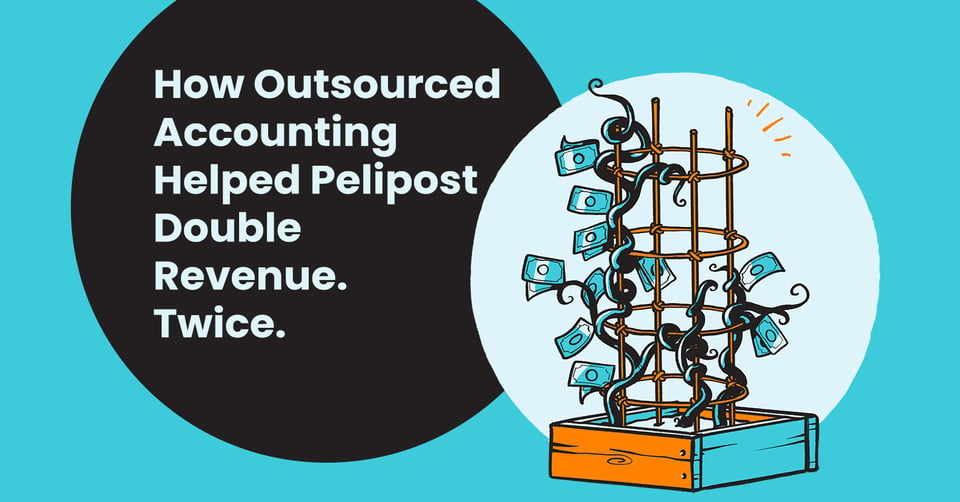
The National Federation of Independent Business reports that over half of all organizations were hiring (or, at least, trying to hire) in September and October of 2020 after a rocky spring and summer season. This figure stands in stark contrast to the “hunker down” posture most assume businesses are taking. If you’re trying to decide when to hire employees, now may be the perfect time—it all depends on your financials.
-1.png)
Source: National Federation of Independent Business October 2020 Jobs Report, “Small Businesses Looking to Hire, Having Trouble Finding Qualified Labor”
Hiring too soon could threaten your cash flow and put your business in serious trouble. Hiring too late, on the other hand . . . well, you’ll be “too late” to capitalize on the opportunity your market is creating.
Your business finances are the best indication of whether now is, indeed, the best time for you to expand your team.
5 ways your financials can show you when to hire employees
1. Workforce Efficiency
If your current team members aren’t producing the output they should, then hiring now could backfire.
An outsourced accountant can assess your production to decide whether you should tighten up in-house processes or start collecting resumes.
2. Show you how wages affect your bottom line
A successful workforce strategy is one of the key elements of a realistic and winning budget plan. Sadly, though, the execution of workforce strategy is often where the inspiring goals break down.
It won’t surprise you to hear that competitively high wages and generous benefits packages can boost morale, attract top talent, and even increase productivity.
The counter-argument to that, of course, is that high labor costs cut directly into your gross profit margin. Also, while compensation and business performance are indeed linked, pay isn’t the only thing driving workers’ output today. In fact,
The Economic Policy Institute has discovered that the growth of productivity has outpaced the rise of pay (by 600%) as both have increased through the years.
-2.png)
Source: The Economic Policy Institute
This is great news for business owners who want to keep equipping their people (and clearing bottlenecks) for affordable, ever-increasing output. An accounting expert knows your industry.
A CFO can conduct a labor cost analysis, looking at your current staff and the full-burden cost of each employee.
Ignite Spot also provides reporting on hiring budgets and staff to revenue performance. This helps you strike the perfect balance between offering competitive compensation to attract top talent and protecting your margins.
Your virtual CFO can also help you determine how well each team is fulfilling its potential. They’ll look for financial indications of inefficiencies and listen for evidence of over- or under-worked people. Together, you and your accountant can shine a light into your financials to decide whether to tighten current operations (by addressing bottlenecks), begin hiring newcomers, or both.
3. Operating Costs
While payroll is a typical business’s largest line item, you could be overspending or underperforming in other areas. A thorough look into your financials can help you determine if this is the case and what to do about it.
4. Optimize vendor relationships to counter the need for more employees
If (like most businesses) suppliers are another large line item for you, then you’ll want to ensure those relationships are also operating at peak performance before deciding whether and when to hire employees. Again, visibility into your finances can help.
An accountant uses your financial data to help you strike the right balance between:
- • Price and vendor value. Together, you and your accountant can determine whether you’re getting the most quality service for your ongoing investment—or whether you’re expecting too much, which threatens the relationship.
- • Favorable payment terms. For example, the timing of deliverables versus payment can have an impact on both businesses’ cash flows.
A study from researchers at Levvel discovered that just 33% of organizations capture early payment discounts from their vendors.
About half said they’re “sometimes” able to score these discounts. Meanwhile, 16% said they never manage to capture early payment discounts.
-4.png)
Source: Levvel Research
- • Static offerings and agile, accommodating service. Many suppliers lock you into an agreement that can hinder your ability to quickly adapt to changing business demands. When you’re confident in your vendors’ willingness to (reasonably) respond to ad hoc or shifting business needs, you can more easily decide if, how, and when to hire employees.
Tightening up operating costs like vendor payables can achieve one of two things: You’ll either economize your partnerships to eliminate the demand for more workers or free up funds to devote to your hiring strategy. Both are business wins.
After this analysis, your outsourced accountant may even open your eyes to a potential new vendor in talent marketplaces and recruiting consultants. For example, Zillow uses Hired to source higher-quality talent than they could find on their own—and faster.
To see how their partnership relates to your own business, apply your knowledge of vendor benefits to your hiring strategy. Zillow knows real estate and tech. A vendor partner allows them to focus on operations and strategic execution of those strengths. Hired, by contrast, is an expert in talent acquisition. The synergy between them is palpable. Without a vendor at this juncture, Zillow’s decision-makers would be pressured to choose between speed and quality.
Watch and learn how to scale your business through vendor relationships here.
Of course, outsourcing talent acquisition is not for every business—an accountant can help you decide the unique-to-you cost-benefit exchange of partnering up.
Supplier relationships arguably carry just as much importance in a business as customer relationships. But they’re just one of many operating costs a fractional CFO can help you analyze to discern when to hire employees.
5. Use cash flow to confirm the ideal time for expansion
Simply put, cash flow is the timing of income and expenditures, and how that rhythm supports or handcuffs your growth.
A cash flow analysis of this cadence can expose potential hiring pitfalls—and potential opportunities.
And when combined with an evaluation of your current productivity and vendor relationships (described above), the insights can be enlightening when deciding when to hire employees.
Profitability is a cash-flow mirage
Many business owners see their on-paper profitability and assume it’s a great time to expand.
Profitability alone cannot be trusted to determine the best time to hire.
In fact, cash flow must be the primary indicator of hiring timetables.
Leo Welder, founder of the Austin, TX-based startup ChooseWhat, takes a smart approach. He compiles enough cash to cover any new employee’s salary, plus 20% for overhead and extra incentives. Weldor revealed to employment experts at Monster,
“If my current cash flow—plus reserves—will run out before hitting the 12-month mark, it’s too risky for both me and the potential hire.” - Leo Welder, founder of ChooseWhat
Favoring on-paper profitability to true, dynamic cash flow can lead to rushed hiring decisions. Most business owners’ financial uncertainty causes them to delay hiring at the very moment they should be expanding the team. Then, when the situation becomes dire, they try to counteract their inactivity. They hire quickly, and too often, they bring on a bad hire. By then, the company loses revenue from missed opportunities. Plus, experts at Harvard Business Review say that avoiding this pitfall benefits your business even more than finding a superstar employee.
Another timing factor to consider when mulling your potential need to hire is the time required to meet, vet, interview, hire, and onboard new folks. Typically, roles take from a few days to four months or more to fill.
.png)
Source: Time to fill benchmarks from Workable
Underestimating the time to fill a position is one of the most common business budgeting mistakes, according toWorkable.
Again, when comparing your business’s cash flow timing to anticipated time-to-fill, your accountant can help you calculate a seamless execution.
Finally, work in a buffer for your new team members’ learning curve. The hosts of the First Round Review podcast recently interviewed Karen Rhorer, customer success & sales strategy lead at Atrium, about her experience hiring the right people—but at the wrong time. The group eventually had to lay off 40% of those they brought on, a heartbreaking experience for everyone involved.
One of the factors involved, Rhorer says, was an underestimation of how long the investment in new people would produce returns.
“It’s important that you know how long it takes a new hire to consistently reach full productivity so that you can account for their cash negative time period.”
- Karen Rhorer, Customer Success & Strategy Lead of Atrium
Treat Talent as Top Priority
LinkedIn researchers reveal that 83% of businesses call talent their #1 priority.
-3.png)
Source: LinkedIn Global Recruiting Trends Report
Not long ago, business owners looked to their physical properties, fixed assets, and capital to monitor their ability to compete. Today, though, some of the businesses with the most impressive amounts of all those metrics still fail, making dramatic headlines on their way down. The organizations with staying power are those that hire the right people at the right time. Human capital is the resource today’s ambitious leaders should care about most.
Many business owners look to their accountants to know how to make large capital investments, but they rarely ask their financial experts to help them strategize their most valuable asset: talent. We believe the latter is even more important to your business’s continued success and future execution. After reading here how an accountant can help, you may agree.
Download Ignite Spot’s pricing guide now, and then call us today to discuss specifically what we can do to optimize your workforce strategy.














.png)


